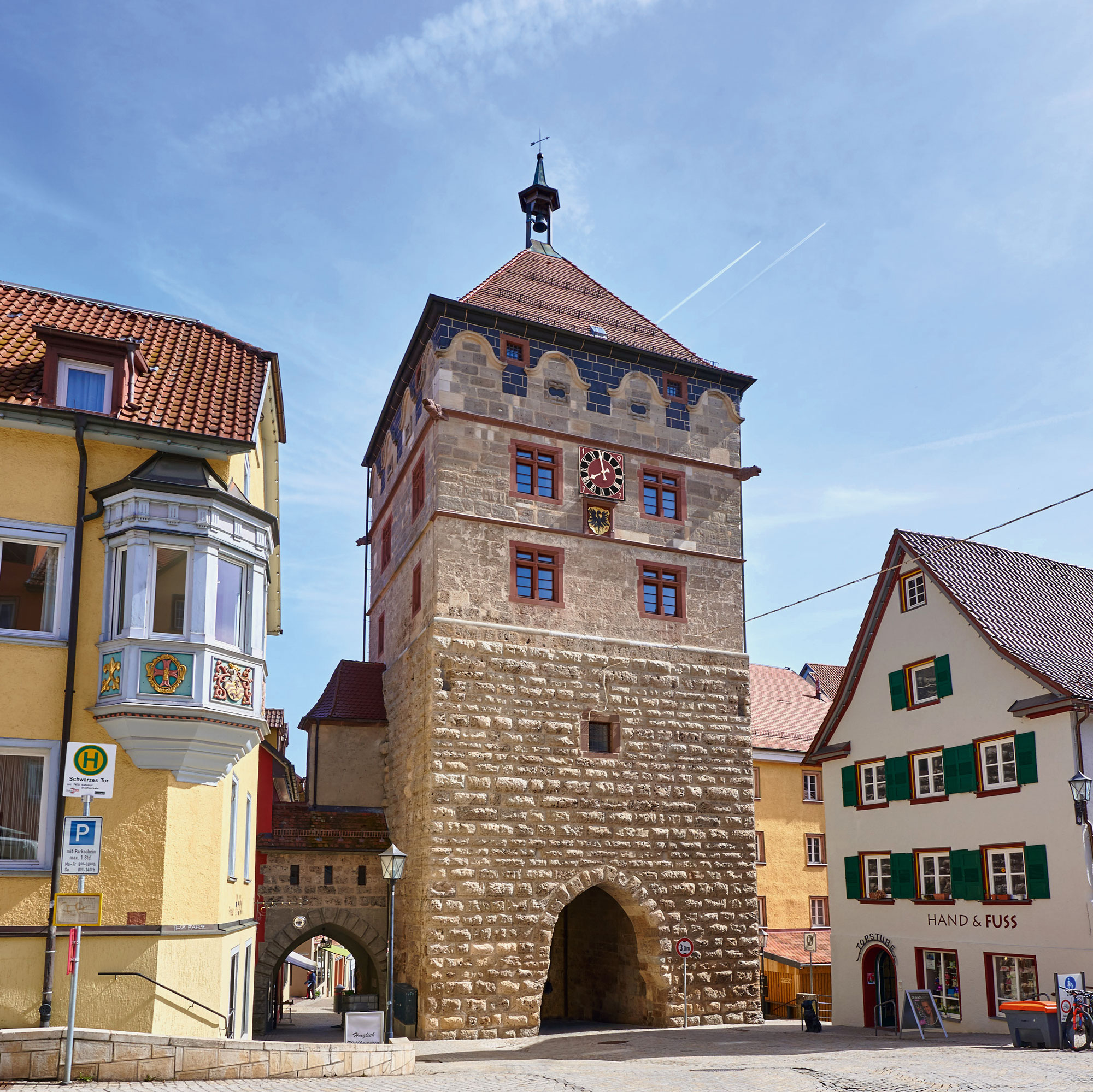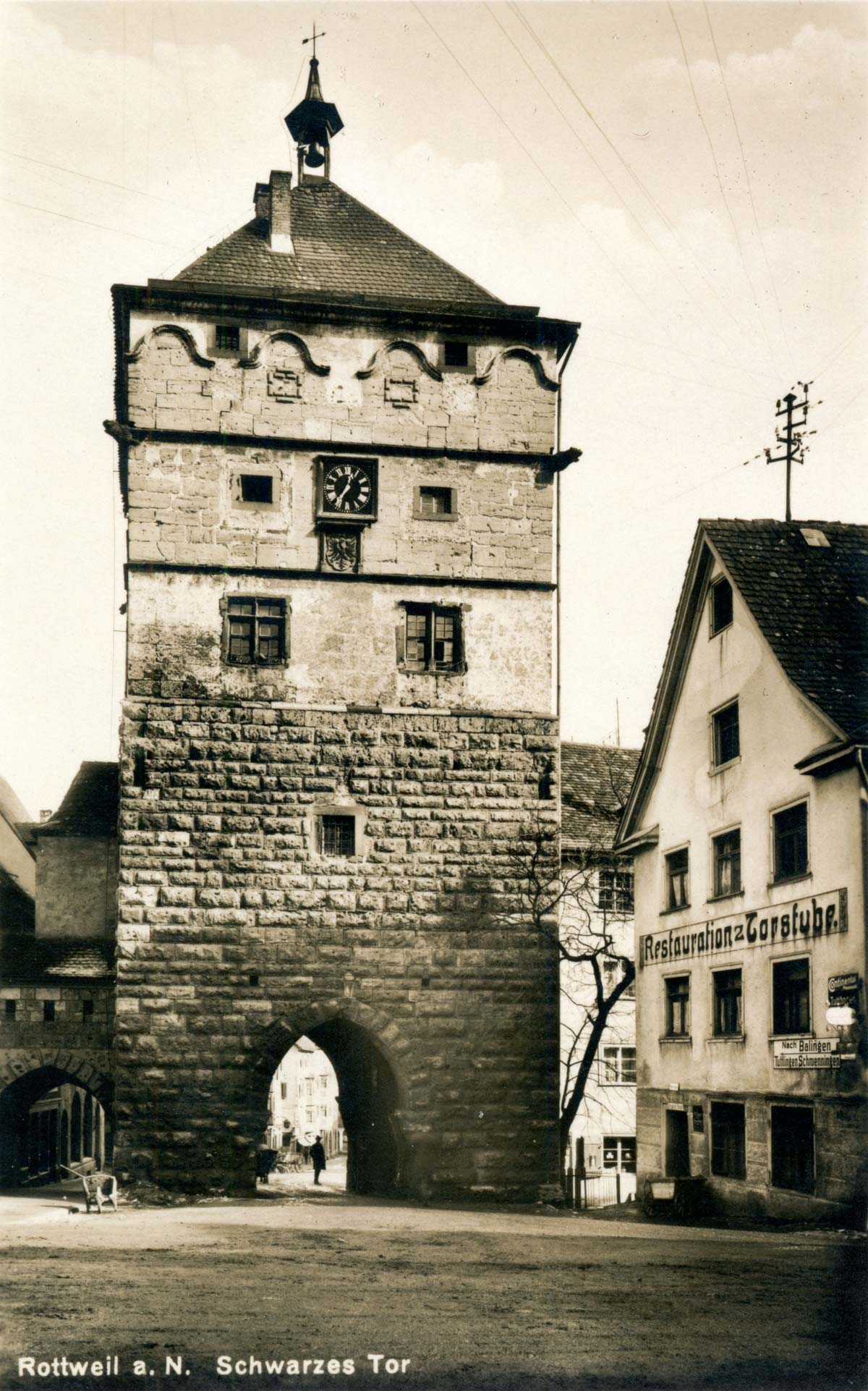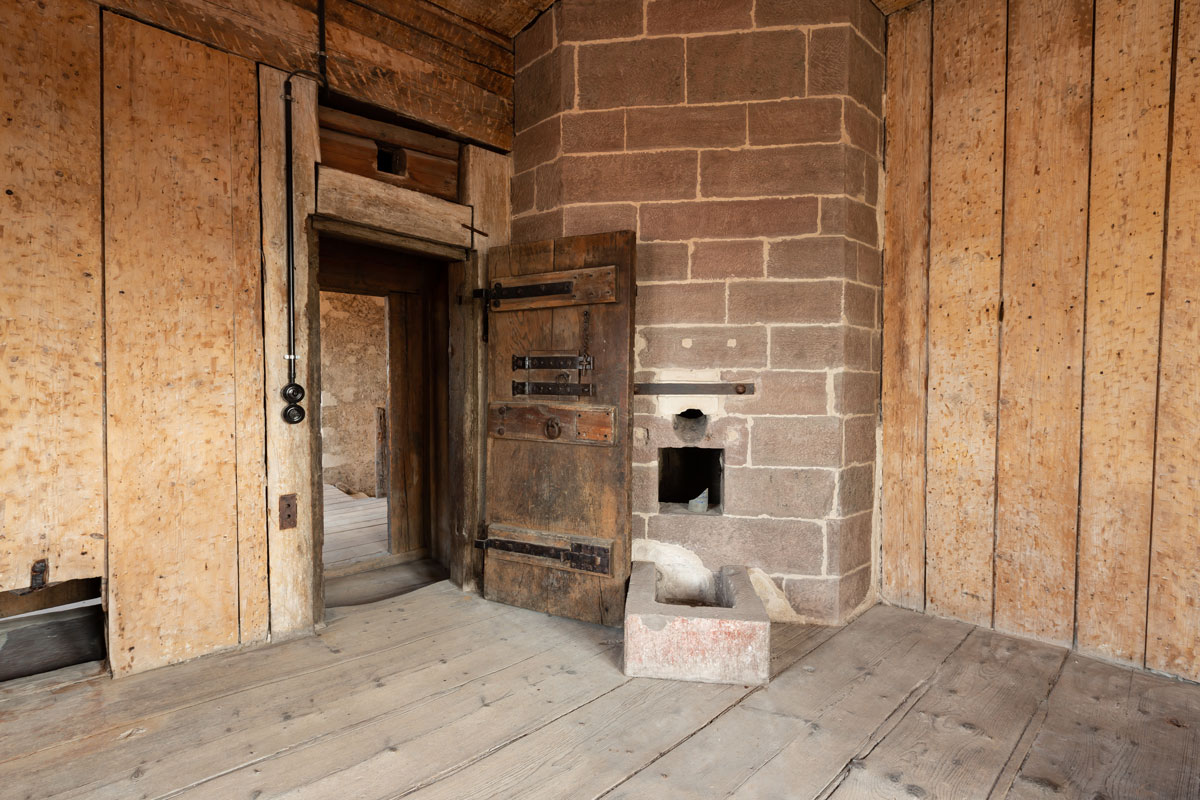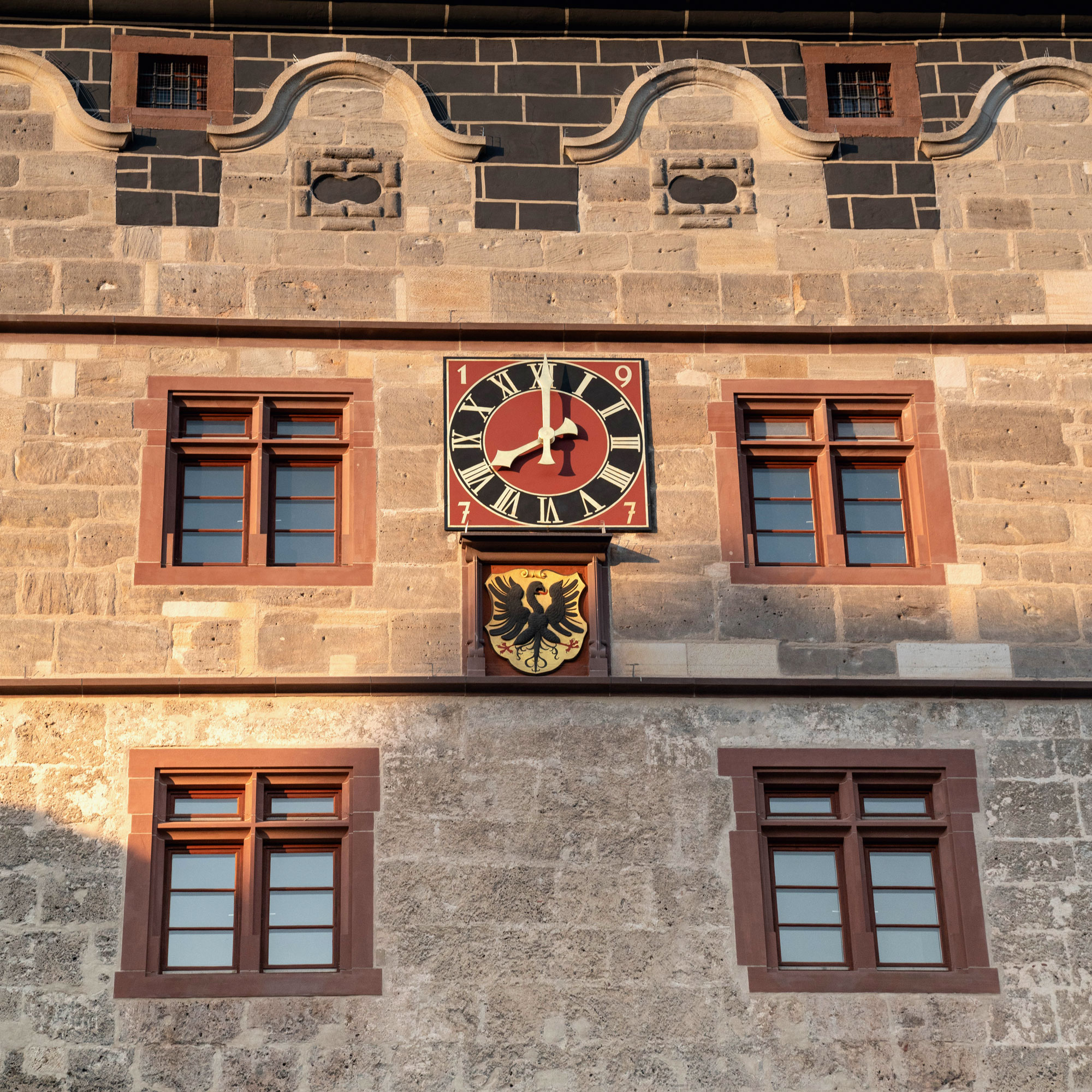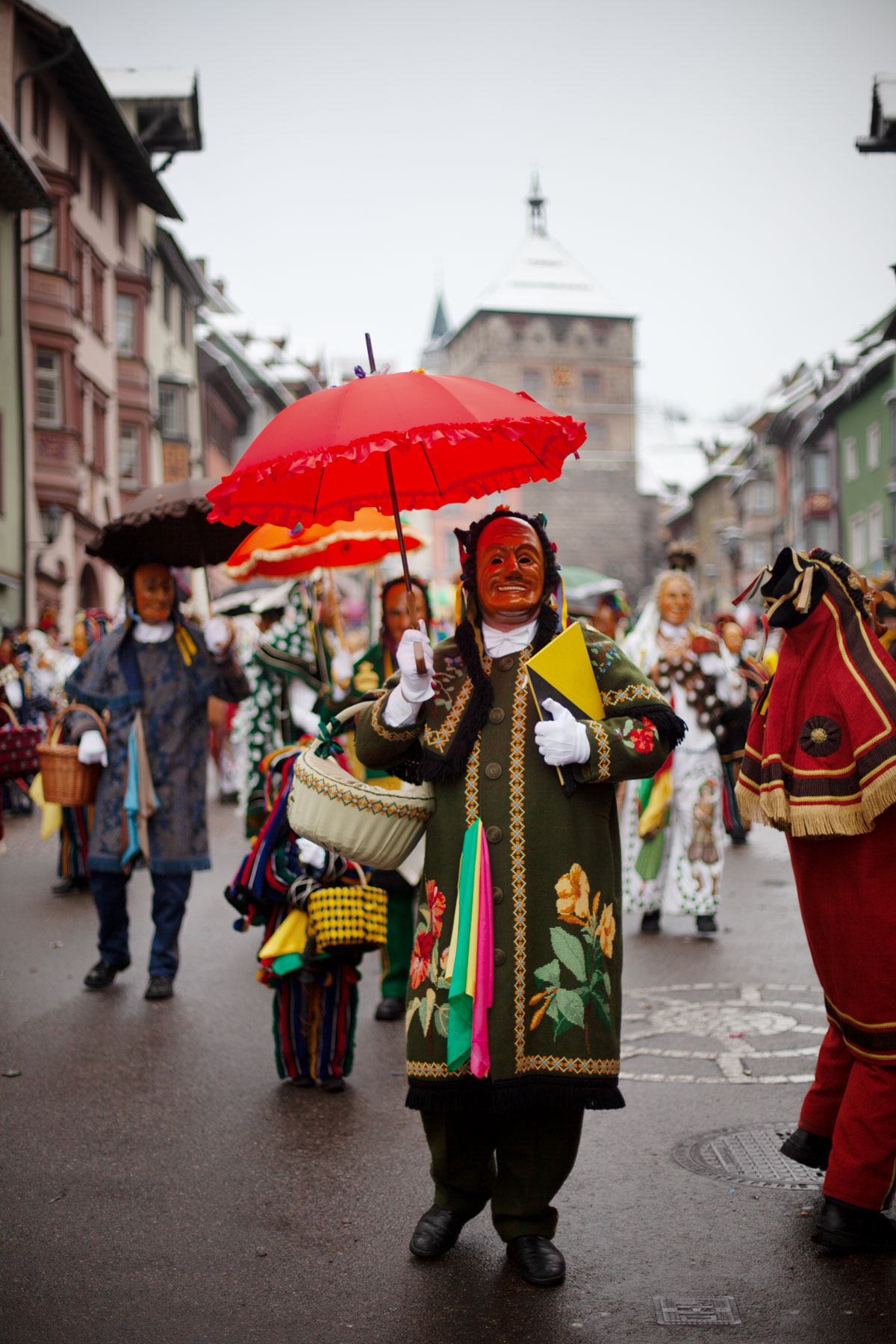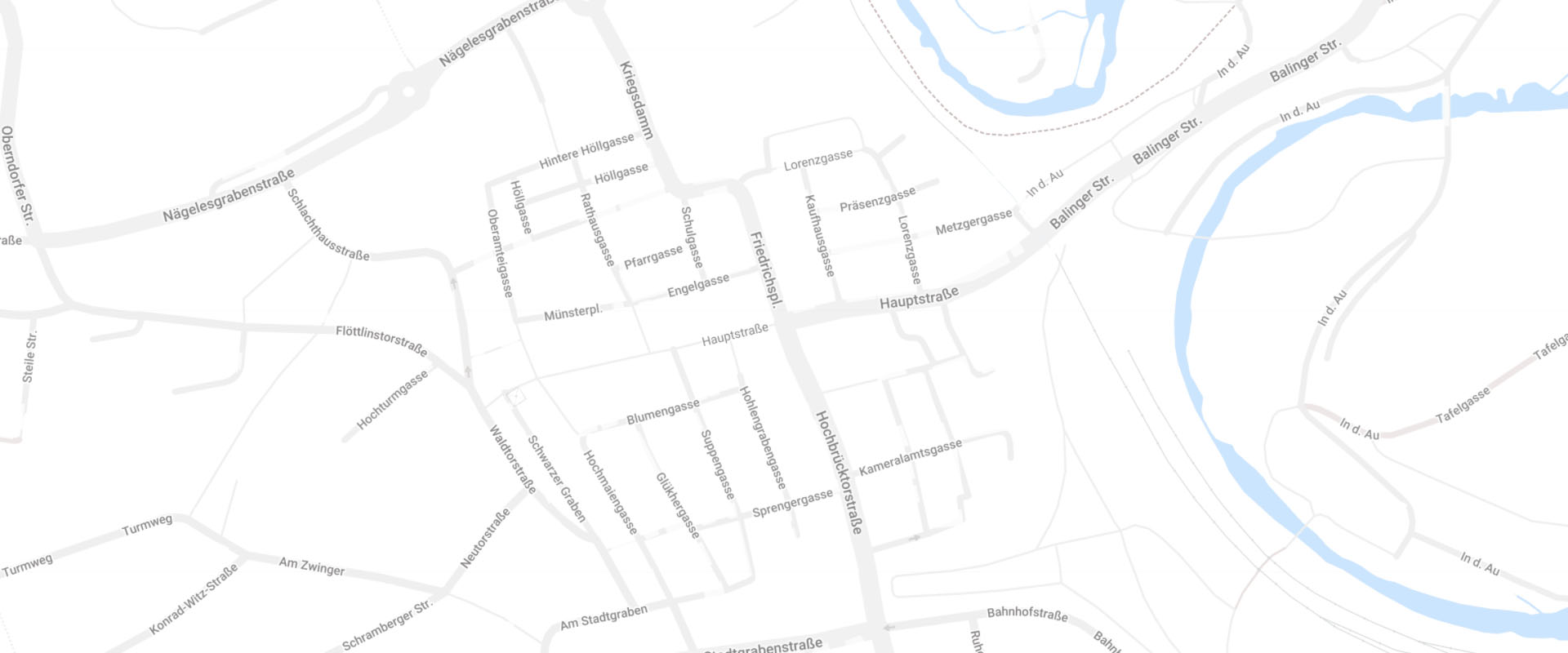The Black Gate, in German “Schwarzes Tor”, is the only intact gate left in the medieval town fortifications. Constructed in the early 13th century, it is one of Rottweil’s oldest architectural monuments. At that time, it was known as the “Forest Gate” or “Waldtor”. With a thickness of more than 3 metres, the stone blocks clearly show how the foundation walls were originally laid during the Staufer period.
The term “Schwarzes Tor” first appears in documents dating 1566, indicating the use of black paint in the past, when refurbishments were done. Around 1571, the tower was raised by two floors and had Gothic windows. A row of battlements running along the outside was constructed above these floors and is still clearly visible today. In the early 18th century, the row of battlements was enclosed, and a hipped roof was added.
The tower keeper and his family lived on the first windowed storey of the gate. Above that, on the second windowed storey, prison cells were built in. It was the responsibility of the tower keeper and his wife to look after the prisoners. In a later reconstruction period, about 200 years ago, cells were also created on the third storey, at the height of the battlements.
The oak cell door on the second windowed storey bears witness to the fate of Christian Schlenker, the “sheep boy” from Schwenningen. He was incarcerated in the gate because of minor wrongdoings, rent he owed and other debts he was not able to pay back. He immortalized himself by etching his name and profession. These writings on the wall tell us that he was arrested in 1847 and imprisoned for 1004 days. A rider on a horse and a picture of a church belong to his etched legacy.
Women were also incarcerated. In 1714, the unmarried Katharina Päurin, from the old town quarter was imprisoned in the Black Gate. She was accused of infanticide. The cross-examination record is part of the town archive. She was pronounced guilty and, together with her mother, sentenced to death by the sword. When convicts passed through the Black Gate, on the way to the place of execution, the “poor sinners’ bell” in the small bell tower began to toll.
Two incarcerated women who were said to be involved in the murder of a farmer cried and screamed in their cell to such an extent that the residents felt disturbed by the noise. The magistrate ordered the barber surgeon to give the two women a thorough bloodletting to calm them down.
About 100 years ago, when all the traffic flowed through the gate, the town decided to create a northern passage for pedestrians. It was only in the 1960s that the southern passage with shop windows was launched by the drugstore owner Tiberius Neher.
The Wurttemberg era almost put an end to the gate, when in May 1869 the “Schwarzwälder Bürgerzeitung” or “Black Forest Citizens’ Newspaper” reported on the front page that “the Black Gate would, by all accounts, … be torn down in the near future. After all, it had neither monumental value nor architectural beauty”. Out of fear about the structural stability of the adjacent houses, however, this idea was given up.
Thus, the Black Gate continues to exist, and on Rottweil’s most important public holidays, the carnival, the Black Gate is the kick-off point for the “Narrensprung” or “fools’ leap”.
